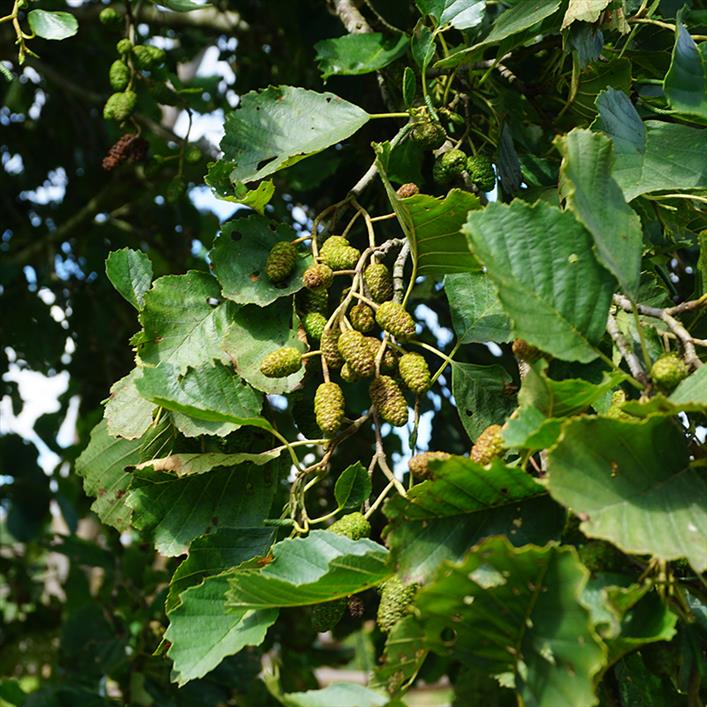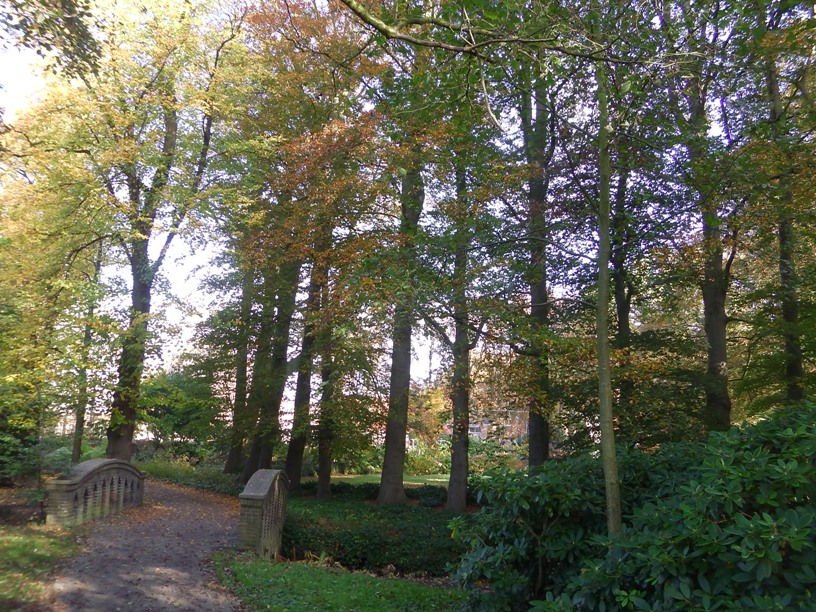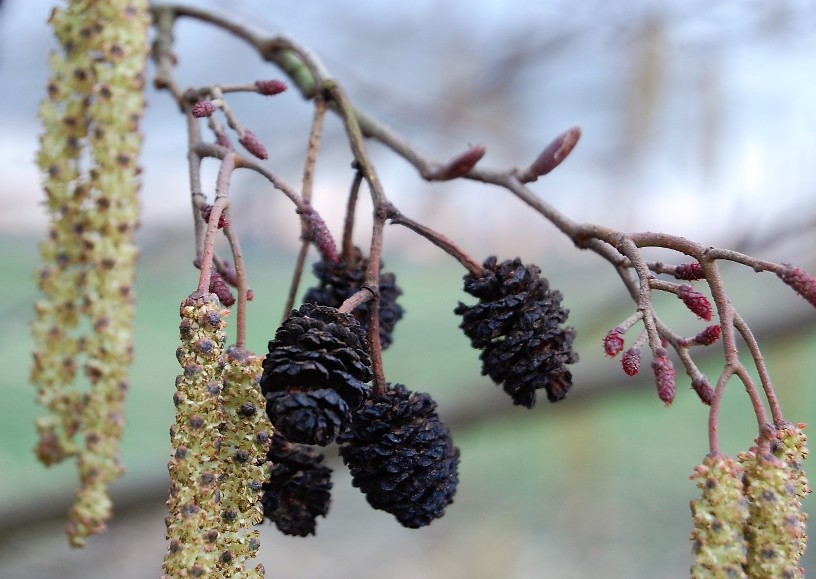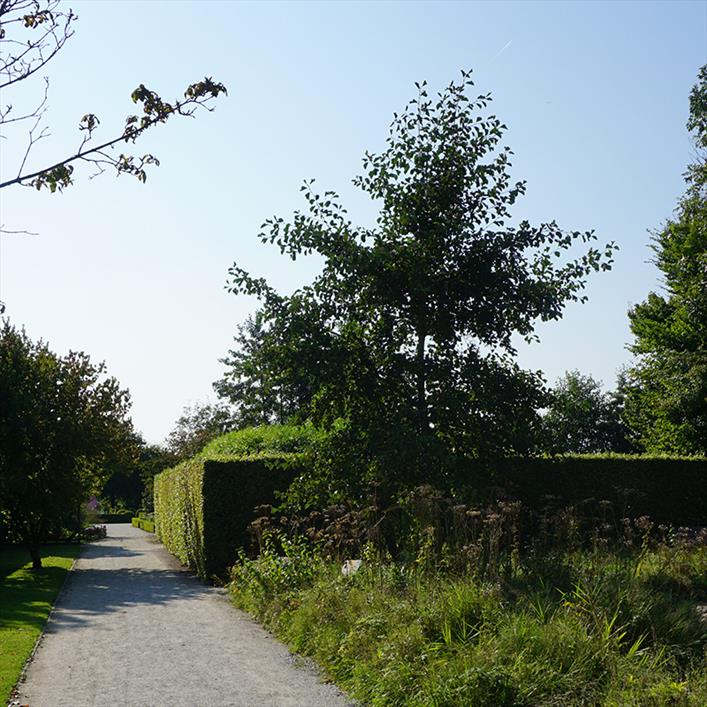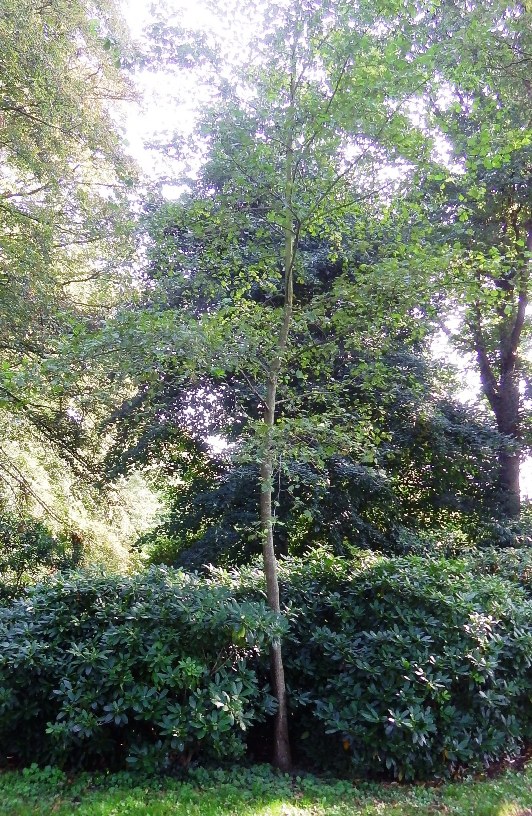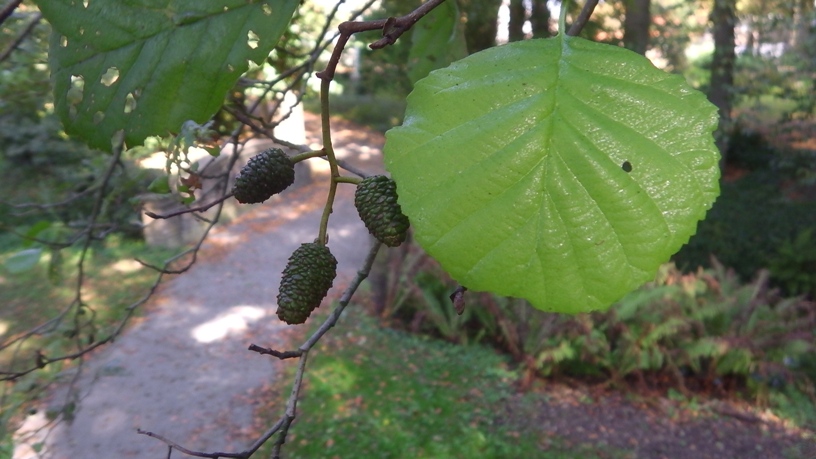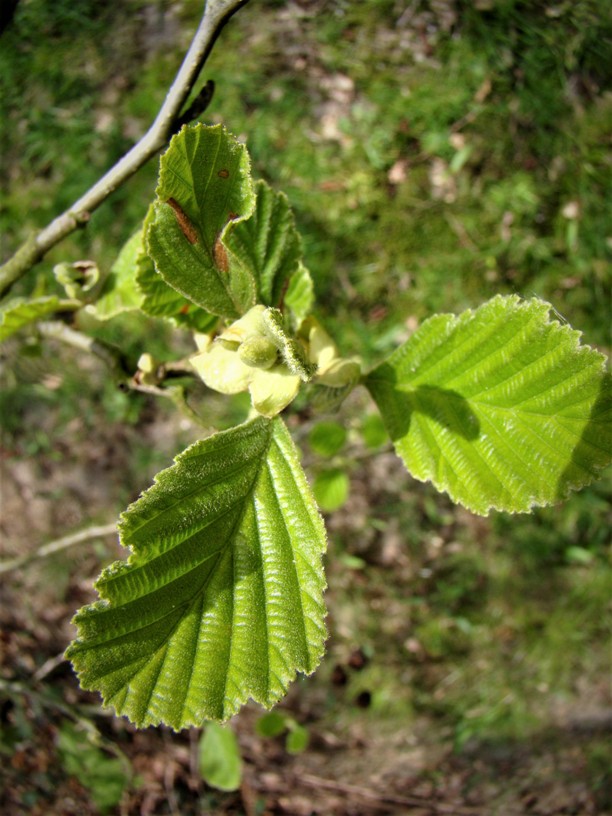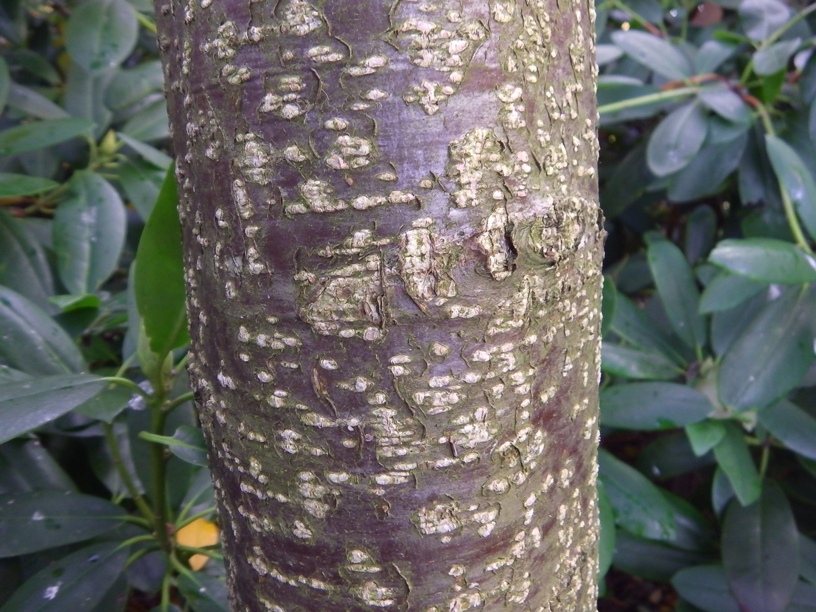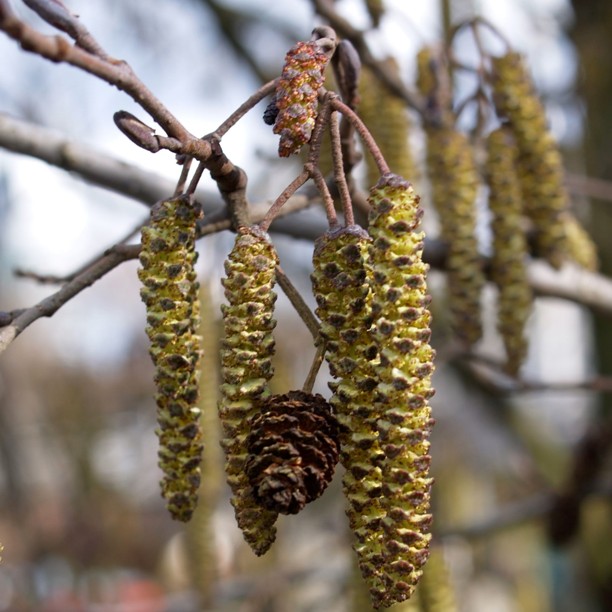Alder
Alnus glutinosa
Birch family (Betulaceae)
Outside black, inside orange
In damp woods and along watercourses alder is the most common tree species. Such alder avenues along watercourses characterize forested areas in Friesland. Its highly branched root system makes it an ideal plant to help stabilize vulnerable riverbanks.
Within the roots are special bacteria that fix nitrogen from the air. The trunk has a black-brown bark. The flowers appear earlier than the leaves. Male catkins are yellow and laden with pollen; female inflorescences are brown. The woody, cone-like structures (mature female catkins with seeds) give the tree its characteristic appearance.
Once felled, alder wood turns orange and this lead to the superstition that the alder is home to an evil spirit, the “Erlkönig” (alder king), from German legend. The bark has traditionally been used as a remedy for ulcers.
Themes
Crown jewel in the De Kruidhof garden of the Nijmegen Botanic Garden.
Alnus glutinosa has multiple uses in the forestry and the timber industry. The orange coloured wood is resistant to rotting and has been called the Scottish Mahogany. When submerged alder wood becomes as hard as iron and was used for piles, foundations, bank protection and to make mattresses for the waterwork industry. Today it is used to make plywood. The wood makes good charcoal. This variety has also been used extensively to control soil erosion and to improve the soil (atmospheric nitrogen converted into a usable form). It is used as a windbreak by fruit igeowers.
The wood is used for coppicing, hedging and historically for lock gates, mill wheels and troughs as it can withstand constant wetting and drying. In Europe it has served for many centuries as an important source of hardwood for timber and carved items, including clogs.
The leaves and bark were historically used to make dyes.
Alnus glutinosa plays an important role in superstition especially in rural areas where it is used to keep pests out of the fields during the sowing season. The white wood of a freshly pruned alder undergoes a colour change - initially to yellow through orange-red to almost blood red. It was once thought that this change in colour was linked to the blood of the devil or witches living in the tree.
The bark and leaves of the tree also have medicinal uses, the bark is astringent, and a decoction was used as a gargle for sore throats; the leaves were used as a compress for swelling and inflammation.
Alnus glutinosa is valuable to wildlife as the cones open gradually and release seed throughout the winter, the seeds are a dependable source of food for seed-eating birds such as pine siskins and goldfinches. It is a recommended species for use in shelterbelts to provide cover for pheasants.
Alder pollen causes moderate allergies and as the black alder is one of the first species to bloom in the winter it is therefore one of the earliest hay fever-causing species.
Details
| Description: | Tree, up to 25 m. |
|---|---|
| Distributions: | Europe to north africa |
| Habitat: | In hilly regions, along the banks of streams and rivers, in damp marshy woods and riverine woodlands, up to 1,000 m altitude. |
| Year cycle: | Perennial (polycarpic decidous) |
| Hardiness: | -4 - 5 f (hardy - very cold winter) |
| Flowering period: | Januari - maart |
| Flower color: | Brown, red, purple, yellow |
| Notes on flowers: | Female flowers reddish brown; male flowers yellow. |
| Fruiting period: | September - oktober |
| Fruit color: | Green, brown |
| Notes on fruits: | Woody cone-like fruits, green to dark brown |
| At its best: | Februari - april |
Sources
http://www.floron.nl/publicaties/rode-lijst-2012,IUCNredlist.org,
https://www.rhs.org.uk/plants/details?plantid=104,
http://www.iucnredlist.org/details/63517/0,
http://www.missouribotanicalgarden.org/PlantFinder/PlantFinderDetails.aspx?kempercode=a930,
http://www.floravannederland.nl/planten/zwarte_els/,
https://wilde-planten.nl/zwarte%20els.htm,
Dendrologie van de lage landen - Jan de Koning en Wim van den Broek, Inheemse bomen en struiken in Nederland en Vlaanderen - Bert Maes, Bomen en mensen een oerou
